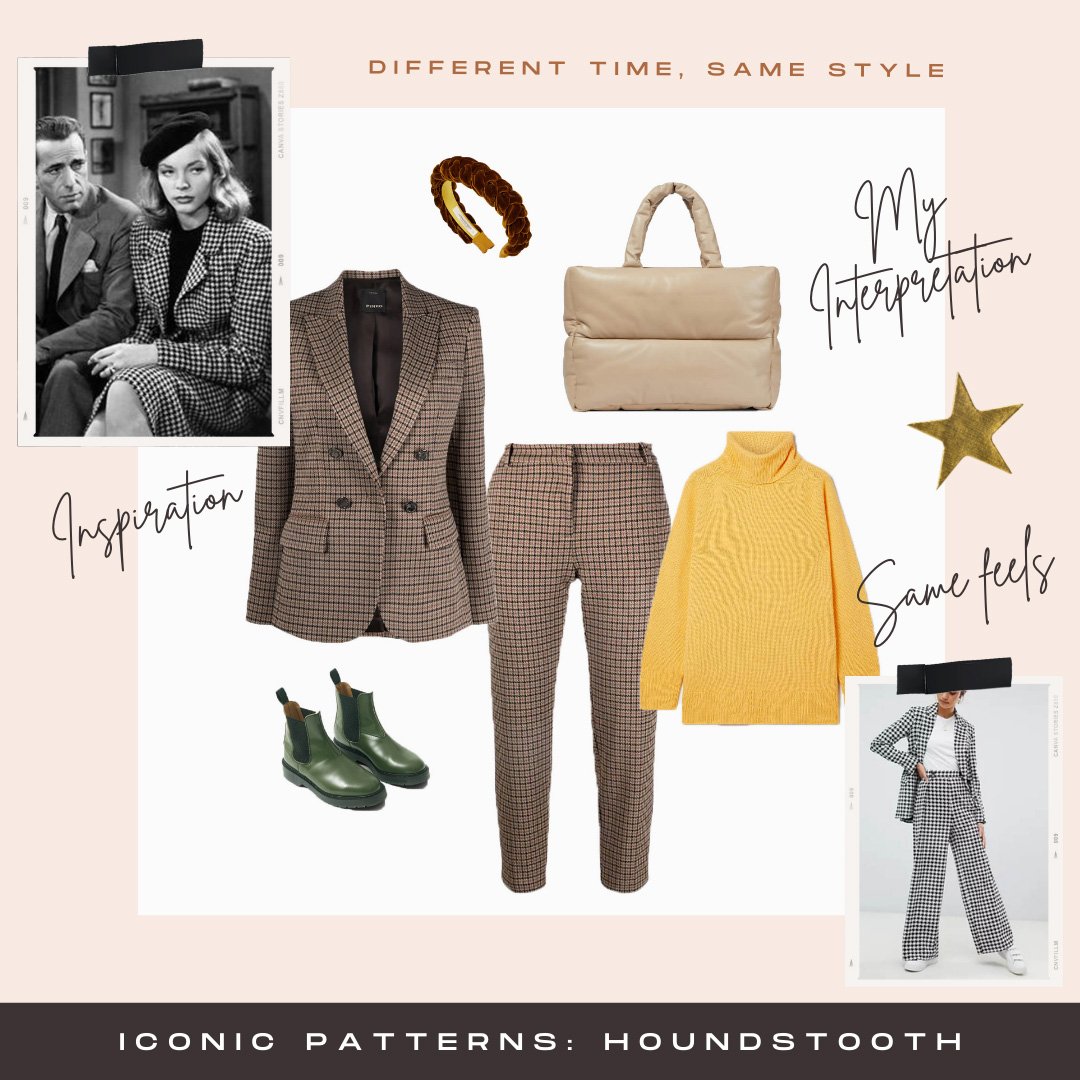Different Time, Same Style: Iconic Patterns
I’m fascinated by the clothing people wore to express themselves in the past. It’s a lot to consider—their personality, ideas about clothing passed down to them by parents or caretakers, wider cultural ideas about what specific pieces meant, the social-political zeitgeist, and how a person put it all together to create their unique sartorial expression. I like to take this stroll down memory lane a step further by conceptualizing what these people from eras or decades past would wear today, in our time and culture. When I see a picture of someone from the past, I consider what factors impacted their clothing choices during that time. While I take creative liberties, I look for relatable themes I use to construct what their outfit might look like today if they were the same age in the picture. I feel like this type of exploration helps us to refine our own style (what Trulery is all about). Lately, my teenage son has been into wearing headbands. He asked me if I liked it; and I asked him the reason he decided to wear it. Then I proceeded to bombard him with a series of questions (just like a mom). I asked him what statement he was trying to make with the headband; if he knew how, where, and in what context the headband originated; and how, where, and in what context it has been used since then. I shared that if he does not know the answer to these questions, it’s difficult to make a strong statement with the headband because he does not know what he is reacting to, or what message he is actually conveying. Needless to say, he hasn’t asked me about the headband since. But my questioning drove home the idea that confident dressing is very much dependent upon our knowledge of history.
For this installment of DTSS, I’m featuring iconic fabric patterns that have lasted through time— plaid, houndstooth, and florals. Similar to the headband, it’s a good idea for us to learn the meaning of the patterns we wear in order to become more attuned to the messages we’re conveying through our clothes. Of course, it’s an ongoing process, but we can learn together.
blazer/dress/purse/shoes/ inspiration pic/same feels pic
Plaid
We often associate plaid with Scotland; but plaid (or tartan as it’s called) has apparently been around way longer. In fact, archeologists discovered the fabric on mummified bodies in Central Asia! Since that time, plaid has been associated with Scottish families/clans and later used as part of their military uniform. In the United States, it became associated with pioneers and lumberjacks; and was considered a fabric suitable for outdoors. By the mid-twentieth century, plaid was used everywhere from clothing to wallpaper; and has been thought of both as anti-establishment and aristocratic. So seeing Denise Huxtable (aka Lisa Bonet) wearing an oversized plaid blazer in the late 80’s early 90’s, it feels “punk” or “boho”. Both blazers and plaid are masculine; and the idea of a female wearing an oversized plaid blazer is ironic, and perhaps intended to subvert the power structure, in the most stylish way of course. Not to mention, it is also very comfortable to wear, and perhaps somewhat alluring. The oversized blazer still carries the same anti-establishment vibe it did 30 years ago, and perhaps the irony is heightened given the increasing erosion of the white, heterosexual male power structure. Worn with a slip dress, the blazer exaggerates the juxtaposition between feminine and masculine, and the allure that wearing both holds. I accessorized it with a modern, square toe slide that I love, and it fits well with the angular feel of the blazer.
blazer/pants/boots/headband/bag/sweater/ inspiration pic/same feels pic
Houndstooth
Like plaid, houndstooth has been linked to Scotland (they have a way with patterns), and was worn by shepherds (it’s also known as “shepherd’s check). By the 1930’s houndtooth was seen as a symbol of wealth, and designers such as Christian Dior used it in their collections. The classic, black-and-white pattern manages to look both modern and vintage at the same. When Lauren Bacall wore it during the 1940’s, she made it seem both edgy and sophisticated, especially with the beret (which is often associated with military and police), and of course the cigarette. Now offered in a variety of colors, the houndstooth pattern may seem less classic than the black-and-white, but continues to carry that distinguished appeal. In an attempt to evoke the same edgy, refined appeal as Lauren Bacall, I thought I’d pair it with combat style boots and a braided headband to keep it ladylike.
Florals
Floral prints are believed to have originated in Asia, and have been around for centuries. But throughout much of history they were reserved for the “upper classes” until technological advances made printing more accessible. Floral designs are most associated with femininity especially when dainty and small. However, different floral patterns evoke different feelings. For instance, the large, colorful geometric florals of the 60s’s feel modern and fun. The inspiration photo is reportedly of an African-American girl in 1910, and she is wearing the Edwardian fashion of the day. Reportedly, newly freed black people wore these clothes to stand out; and the history of black people “stepping out” or “showing out” may be attributable to this time when it was so important for them to express themselves and their identity. I think this picture is beautiful and love how she is wearing a belt and necklace—signs of individuality. I decided to recreate this look using a dress with floral embroidery, and these Jamaican inspired sandals are a subtle celebration of (my) afrocentric heritage.
Which prints to do you wear the most, and why? I’d love to hear about it in the comments. :)



